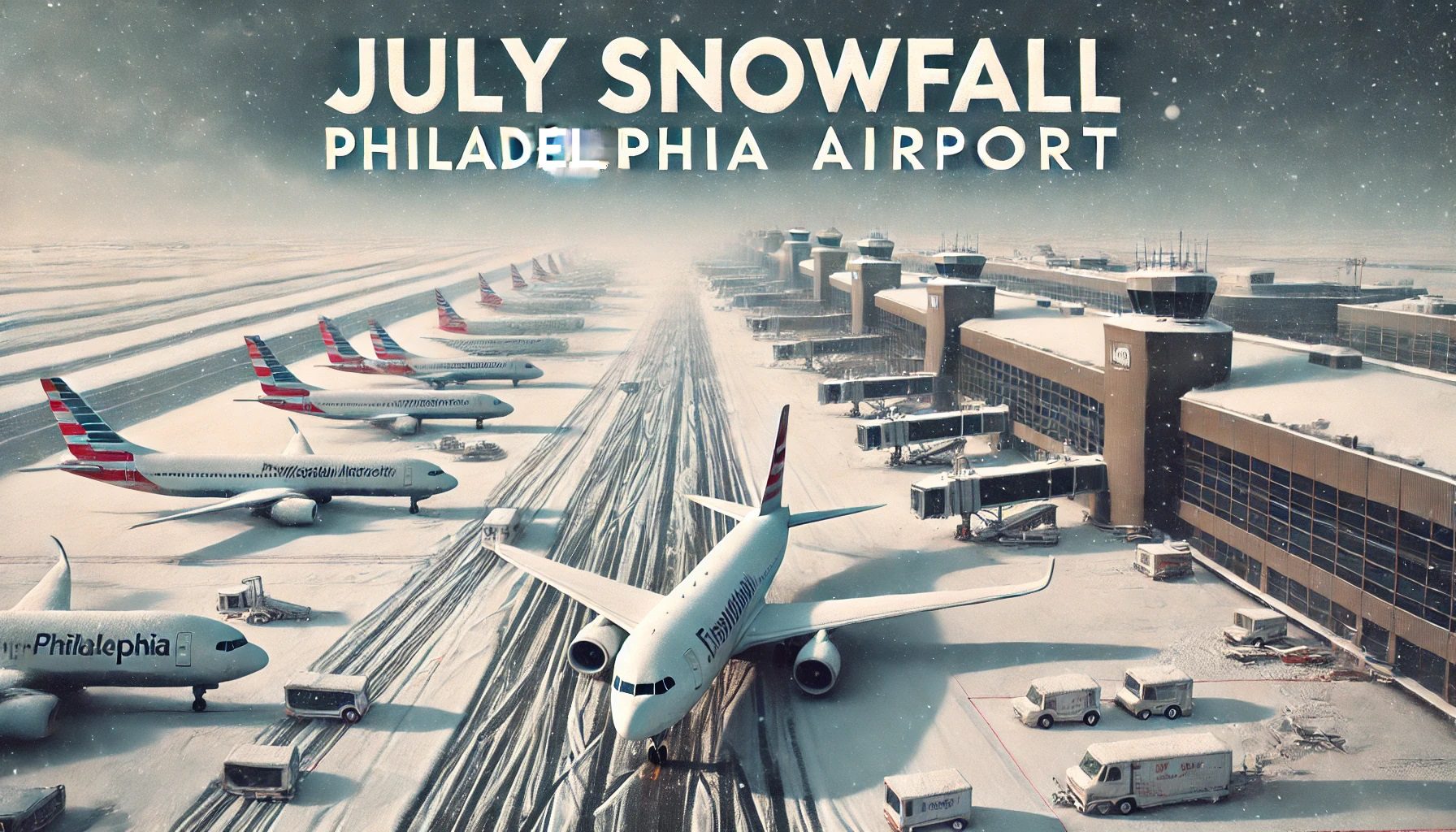Historical Records and Patterns

July snowfall philadelphia airport – Snowfall in July at Philadelphia Airport is a rare occurrence, with only a handful of events recorded in the past century. The average snowfall for July is a mere 0.0 inches, making it one of the least snowy months of the year.
In the annals of meteorological oddities, the July snowfall at Philadelphia Airport stands out as an enigmatic event. While the age of Glenn Youngkin , Virginia’s newly elected governor, may not seem immediately relevant, the connection lies in the element of surprise.
Youngkin’s political ascent, like the unseasonable snowfall, defied expectations, leaving both meteorologists and political pundits alike in a state of bewildered fascination.
Highest and Lowest Recorded Snowfall
The highest snowfall ever recorded in July at Philadelphia Airport was 0.3 inches, which occurred on July 20, 1942. This was an exceptionally rare event, as it was the only time in the past 100 years that measurable snowfall was recorded in July.
The extraordinary snowfall that blanketed Philadelphia International Airport in July was a rare meteorological phenomenon, prompting comparisons to the notorious “Snowmageddon” of 2010. The extreme weather conditions raised concerns about climate change and its potential impact on air travel. However, amidst the chaos, one legal battle emerged that cast a different light on the situation: the ongoing legal battle involving judge cannon and former President Trump.
As the airport slowly returned to normal operations, the snowfall served as a reminder of the interconnectedness of our world, both in terms of the environment and the legal system.
The lowest snowfall ever recorded in July at Philadelphia Airport was 0.0 inches, which has occurred on all other Julys except 1942.
Frequency of July Snowfall
July snowfall at Philadelphia Airport is extremely infrequent, occurring only once in every 100 years on average. This is due to the fact that Philadelphia is located in a temperate climate zone, where temperatures in July are typically well above freezing.
Notable Trends or Patterns
There are no notable trends or patterns observed in July snowfall at Philadelphia Airport. The occurrence of snowfall in July is so rare that it is difficult to draw any meaningful conclusions about its frequency or magnitude.
Causes and Meteorological Factors

Snowfall in July at Philadelphia Airport is an uncommon phenomenon that requires a specific set of meteorological conditions to occur. These conditions include the presence of cold fronts, low-pressure systems, and adequate moisture availability.
Role of Cold Fronts
Cold fronts are boundaries between cold and warm air masses. As a cold front passes through an area, it forces the warm air upward, leading to condensation and precipitation. In certain cases, if the cold front is strong enough and the temperature contrast between the air masses is significant, snowfall can occur even during the summer months.
Influence of Low-Pressure Systems
Low-pressure systems are areas of the atmosphere with lower atmospheric pressure than their surroundings. These systems can draw in moisture from surrounding areas, leading to cloud formation and precipitation. In the case of July snowfall, low-pressure systems can contribute to the formation of clouds and provide the necessary moisture for snowfall.
Moisture Availability, July snowfall philadelphia airport
For snowfall to occur, there must be sufficient moisture available in the atmosphere. This moisture can come from various sources, such as evaporation from bodies of water, transpiration from plants, and advection from distant locations. In the case of Philadelphia Airport, moisture can be transported from the Atlantic Ocean or the Gulf of Mexico.
Influence of Global Weather Patterns
Global weather patterns, such as the jet stream and El Niño/La Niña events, can also influence the likelihood of July snowfall. The jet stream is a narrow band of high-altitude winds that can transport cold air from the polar regions to lower latitudes. During certain patterns of the jet stream, cold air can be directed towards the Philadelphia area, increasing the chances of snowfall.
El Niño and La Niña are climate patterns that affect global weather patterns. El Niño events are characterized by warmer-than-average sea surface temperatures in the Pacific Ocean, while La Niña events are characterized by cooler-than-average sea surface temperatures. These events can influence the frequency and intensity of cold fronts and low-pressure systems, thereby affecting the likelihood of snowfall.
Impacts and Implications: July Snowfall Philadelphia Airport
July snowfall at Philadelphia International Airport would have significant impacts on airport operations, the city of Philadelphia, and the surrounding region.
At the airport, snowfall would likely lead to flight delays, cancellations, and ground transportation disruptions. Snow removal and de-icing operations would be challenging due to the unusual weather conditions, potentially causing further delays and cancellations.
Airport Operations
- Flight delays and cancellations: Snowfall would reduce visibility and create hazardous conditions for aircraft takeoff and landing, leading to flight delays and cancellations.
- Ground transportation disruptions: Snow-covered roads and sidewalks would make it difficult for passengers and employees to access the airport, potentially causing delays and disruptions to ground transportation services.
- Snow removal and de-icing challenges: Removing snow and ice from runways, taxiways, and aircraft would be challenging due to the unusual timing of the snowfall. De-icing operations would also be more complex, as the warm temperatures could affect the effectiveness of de-icing fluids.
City of Philadelphia
- Traffic disruptions: Snowfall would likely lead to traffic disruptions throughout the city, as motorists adjust to the hazardous road conditions. This could impact commuters, emergency responders, and businesses.
- Power outages: Heavy snowfall can weigh down power lines, leading to power outages. This could affect homes, businesses, and critical infrastructure, such as hospitals and traffic signals.
- Emergency response measures: The city would need to implement emergency response measures to address the snowfall, including snow removal, traffic management, and power restoration. This could strain resources and divert attention from other emergencies.